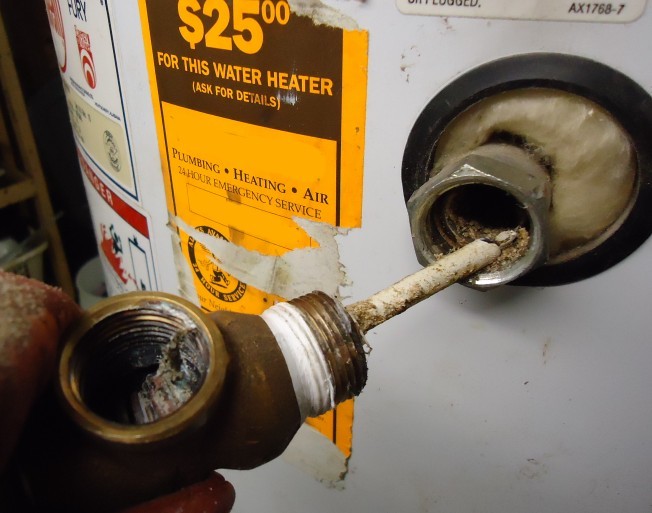They are making a number of good pointers regarding What Kind of Maintenance Do Water Heaters Need? in general in this content below.

Warm water is vital for day-to-day comfort, whether it's for a revitalizing shower or cleaning dishes. To guarantee your hot water system runs successfully and lasts much longer, regular upkeep is key. This post provides functional suggestions and understandings on exactly how to keep your home's hot water system to stay clear of interruptions and pricey repair work.
Intro
Preserving your home's warm water system may appear difficult, yet with a few straightforward steps, you can guarantee it runs smoothly for many years to come. This guide covers every little thing from comprehending your warm water system to do it yourself maintenance tips and recognizing when to call in expert assistance.
Relevance of Maintaining Your Hot Water System
Routine upkeep not just prolongs the life-span of your hot water system however additionally ensures it operates successfully. Neglecting maintenance can bring about decreased effectiveness, greater energy bills, and also early failure of the system.
Indications Your Warm Water System Demands Maintenance
Understanding when your warm water system requires attention can stop significant issues. Look out for indications such as irregular water temperature level, unusual noises from the heating unit, or rustic water.
Purging the Water Heater
Flushing your water heater eliminates debris accumulation, boosting efficiency and prolonging its life.
Monitoring and Changing Anode Rods
Anode rods avoid rust inside the storage tank. Examining and changing them when broken is essential.
Complicated Problems Calling For Specialist Aid
Examples consist of significant leakages, electrical problems, or if your water heater is regularly underperforming.
Routine Expert Upkeep Perks
Specialist upkeep can consist of detailed examinations, tune-ups, and making sure conformity with safety and security criteria.
Evaluating and Changing Temperature Level Setups
Changing the temperature settings guarantees optimal performance and safety and security.
DIY Tips for Maintenance
You can execute numerous upkeep jobs on your own to keep your hot water system in top condition.
Checking for Leakages
Regularly inspect pipelines and links for leakages, as these can cause water damage and higher bills.
Recognizing Your Warm Water System
Before diving right into maintenance tasks, it's handy to comprehend the basic parts of your hot water system. Usually, this includes the water heater itself, pipelines, anode poles, and temperature level controls.
Regular Monthly Maintenance Tasks
Normal month-to-month checks can assist catch minor issues before they intensify.
Checking Stress Alleviation Valves
Checking the stress relief valve ensures it operates appropriately and protects against extreme pressure accumulation.
Shielding Pipes
Protecting warm water pipes reduces warmth loss and can conserve energy.
When to Call a Professional
While do it yourself maintenance is useful, some issues call for expert knowledge.
Final thought
Normal maintenance of your home's warm water system is crucial for performance, durability, and cost financial savings. By adhering to these suggestions and knowing when to seek professional assistance, you can guarantee a dependable supply of warm water without unforeseen disruptions.
How to Maintain an Instant Hot Water Heater
Before tinkering with your hot water heater, make sure that it’s not powered on. You also have to turn off the main circuit breaker and shut off the main gas line to prevent accidents. Also turn off the water valves connected to your unit to prevent water from flowing into and out of the appliance. 2. When you’re done, you have to detach the purge valves’ caps. These look like the letter “T†and are situated on either side of the water valves. Doing so will release any pressure that has accumulated inside the valves while at the same time avoid hot water from shooting out and burning your skin. 3. When the purge valves’ caps are removed, you have to connect your hosing lines to the valves. Your unit should have come with three hoses but if it didn’t, you can purchase these things from any hardware or home repair shops. You can also get them from retail stores that sell water heating systems. Read the user’s manual and follow it to complete this task properly. When the hosing lines are connected, open the purge port’s valves. 4. You should never use harsh chemical cleaners or solutions when cleaning your unit. Make use of white vinegar instead. It should be undiluted and you’ll probably use about 2 gallons. 5. Now flush your water heater. This task should probably take about 40 minutes. We can’t give you specific directions for this because the procedure is carried out depending on the type, model and brand of your heater. With that being said, refer to the user’s manual. 6. When you’re done draining the unit, you have to turn off the purge port valves again. Remove the hosing lines that you earlier installed on each of the water valves. Put the valve caps (purge port) back in their respective places and be very careful so as not to damage the rubber discs that are found inside these caps. 7. Now that everything’s back in place, check your user’s manual again to find out how to reactivate your water heating system. 8. Once it is working, turn one of your hot water faucets on just to let air pass through the heater’s water supply pipes. Leave the tap on until water flows smoothly out of it. https://www.orrplumbing.com/blog/2014/september/how-to-maintain-an-instant-hot-water-heater/

I came across that content about What Kind of Maintenance Do Water Heaters Need? while doing a search on the internet. Are you aware of someone else who is fascinated by the subject? Take a moment to share it. Thanks for taking the time to read it.
Visit